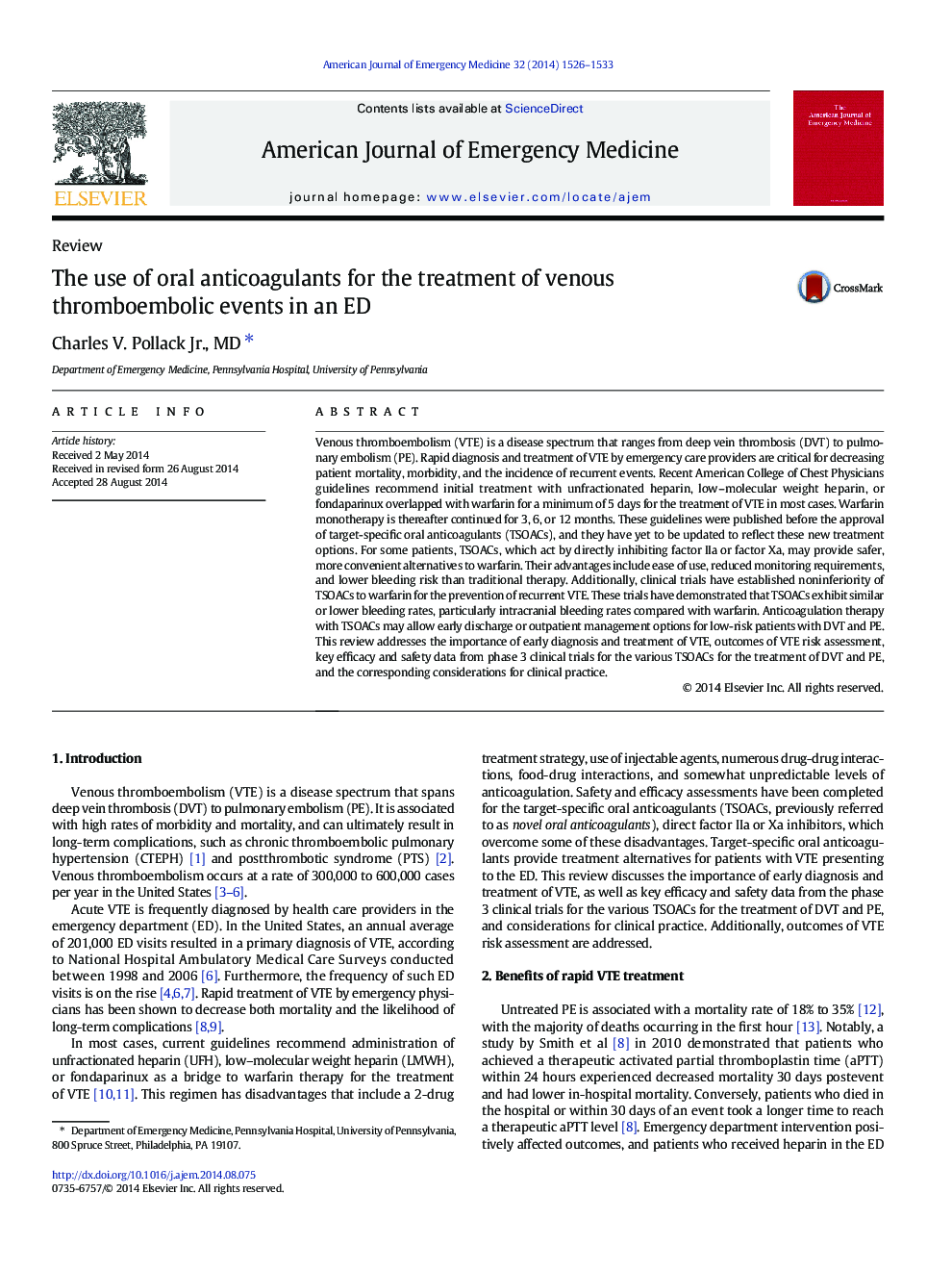| Article ID | Journal | Published Year | Pages | File Type |
|---|---|---|---|---|
| 3224083 | The American Journal of Emergency Medicine | 2014 | 8 Pages |
•Rapid diagnosis and treatment of VTE are critical in the emergency department.•TSOACs are used in treatment of acute VTE and prevention of recurrent VTE.•TSOACs are noninferior to warfarin for efficacy.•TSOACs are associated with fewer bleeding risks than warfarin.
Venous thromboembolism (VTE) is a disease spectrum that ranges from deep vein thrombosis (DVT) to pulmonary embolism (PE). Rapid diagnosis and treatment of VTE by emergency care providers are critical for decreasing patient mortality, morbidity, and the incidence of recurrent events. Recent American College of Chest Physicians guidelines recommend initial treatment with unfractionated heparin, low–molecular weight heparin, or fondaparinux overlapped with warfarin for a minimum of 5 days for the treatment of VTE in most cases. Warfarin monotherapy is thereafter continued for 3, 6, or 12 months. These guidelines were published before the approval of target-specific oral anticoagulants (TSOACs), and they have yet to be updated to reflect these new treatment options. For some patients, TSOACs, which act by directly inhibiting factor IIa or factor Xa, may provide safer, more convenient alternatives to warfarin. Their advantages include ease of use, reduced monitoring requirements, and lower bleeding risk than traditional therapy. Additionally, clinical trials have established noninferiority of TSOACs to warfarin for the prevention of recurrent VTE. These trials have demonstrated that TSOACs exhibit similar or lower bleeding rates, particularly intracranial bleeding rates compared with warfarin. Anticoagulation therapy with TSOACs may allow early discharge or outpatient management options for low-risk patients with DVT and PE. This review addresses the importance of early diagnosis and treatment of VTE, outcomes of VTE risk assessment, key efficacy and safety data from phase 3 clinical trials for the various TSOACs for the treatment of DVT and PE, and the corresponding considerations for clinical practice.
